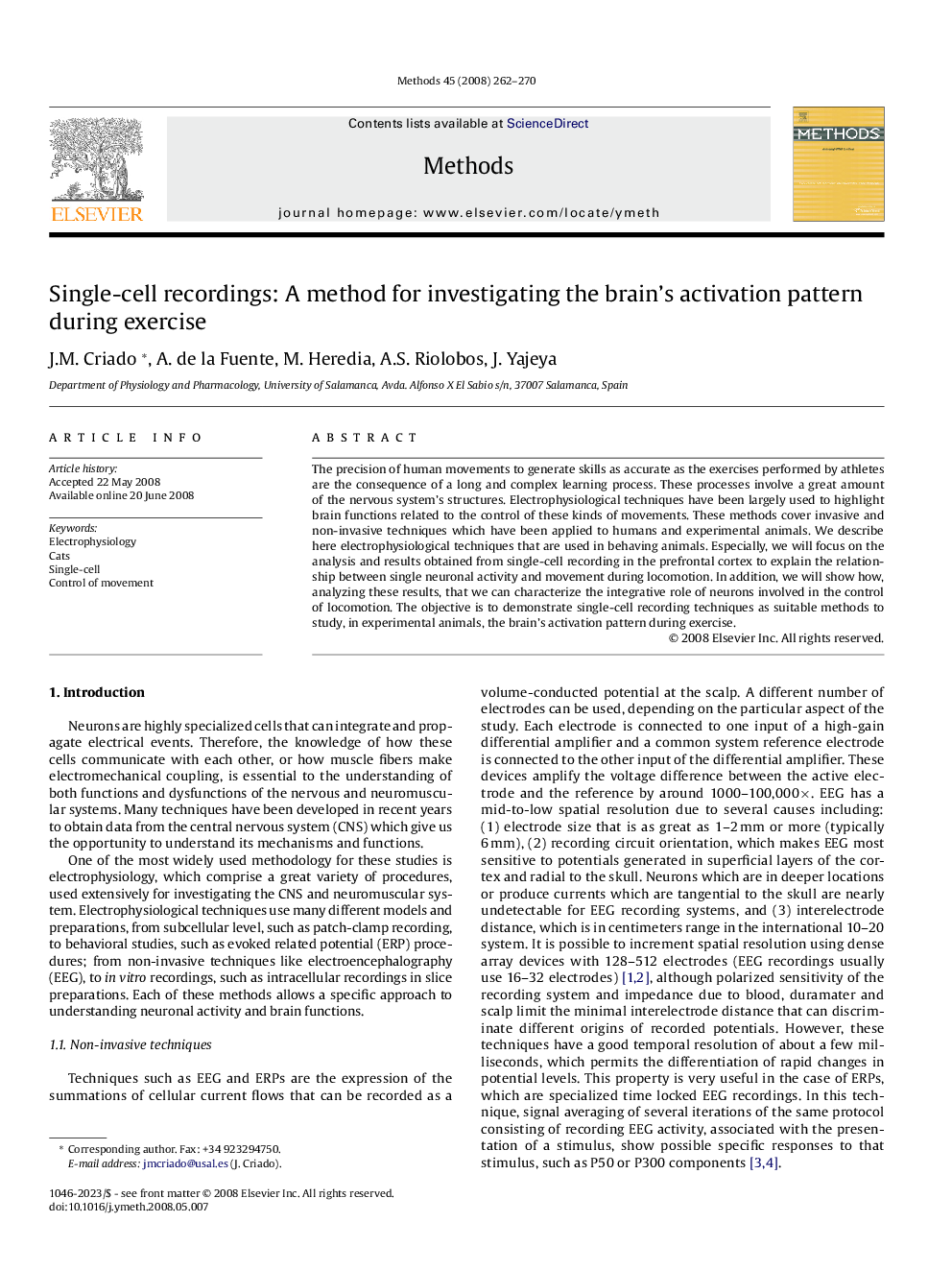| Article ID | Journal | Published Year | Pages | File Type |
|---|---|---|---|---|
| 1994339 | Methods | 2008 | 9 Pages |
The precision of human movements to generate skills as accurate as the exercises performed by athletes are the consequence of a long and complex learning process. These processes involve a great amount of the nervous system’s structures. Electrophysiological techniques have been largely used to highlight brain functions related to the control of these kinds of movements. These methods cover invasive and non-invasive techniques which have been applied to humans and experimental animals. We describe here electrophysiological techniques that are used in behaving animals. Especially, we will focus on the analysis and results obtained from single-cell recording in the prefrontal cortex to explain the relationship between single neuronal activity and movement during locomotion. In addition, we will show how, analyzing these results, that we can characterize the integrative role of neurons involved in the control of locomotion. The objective is to demonstrate single-cell recording techniques as suitable methods to study, in experimental animals, the brain’s activation pattern during exercise.
